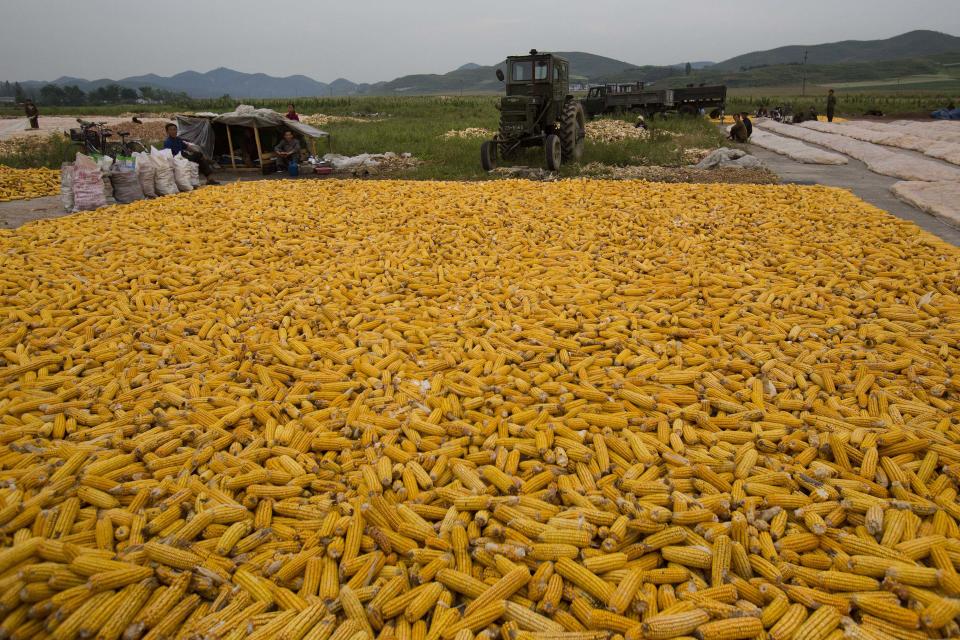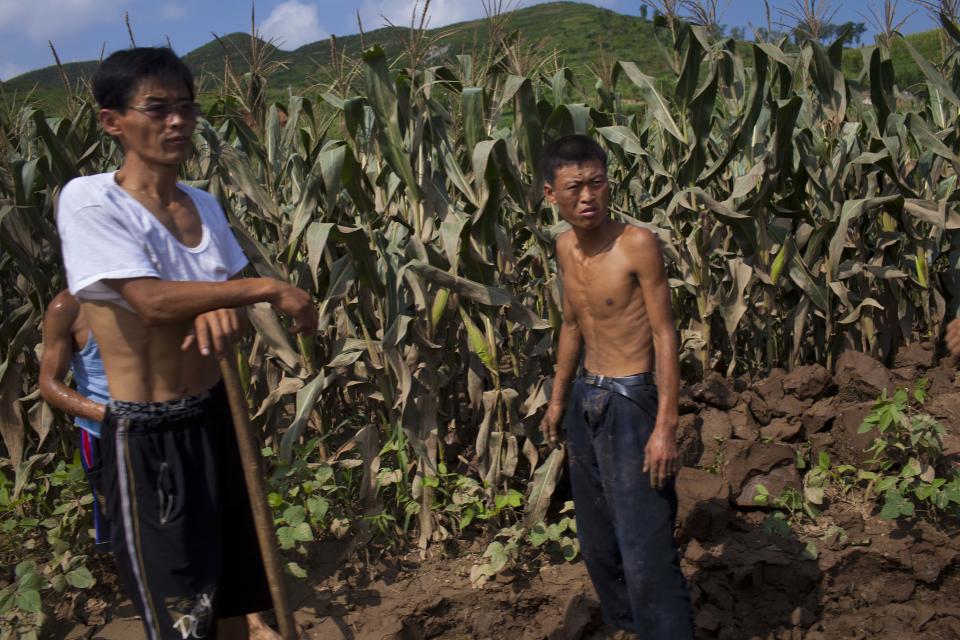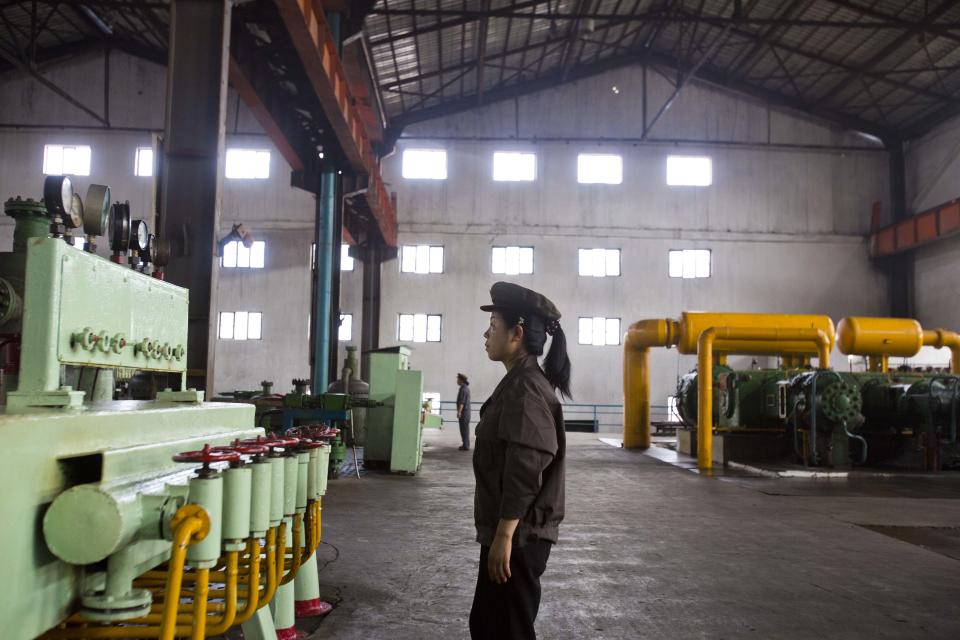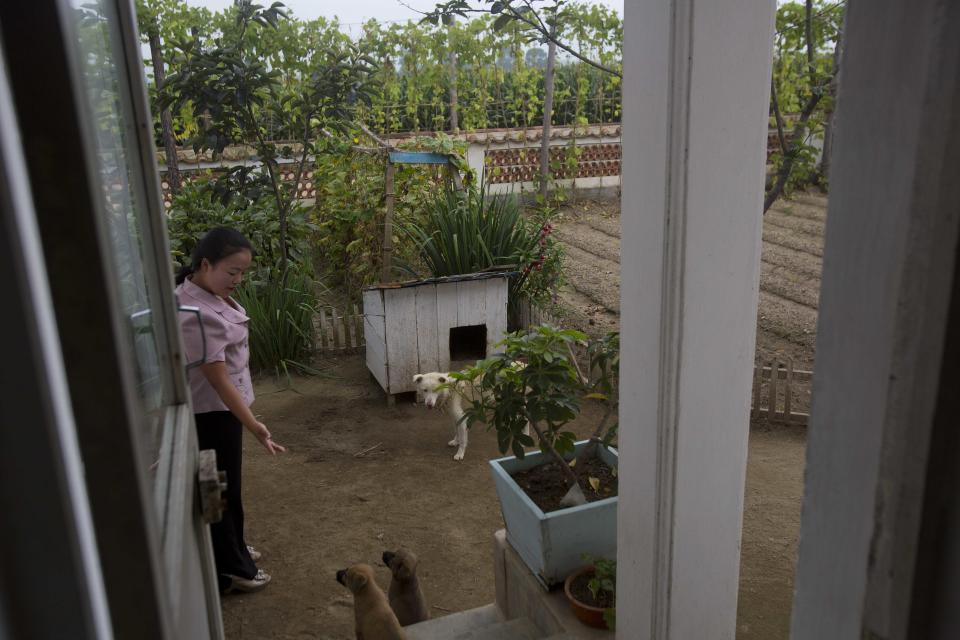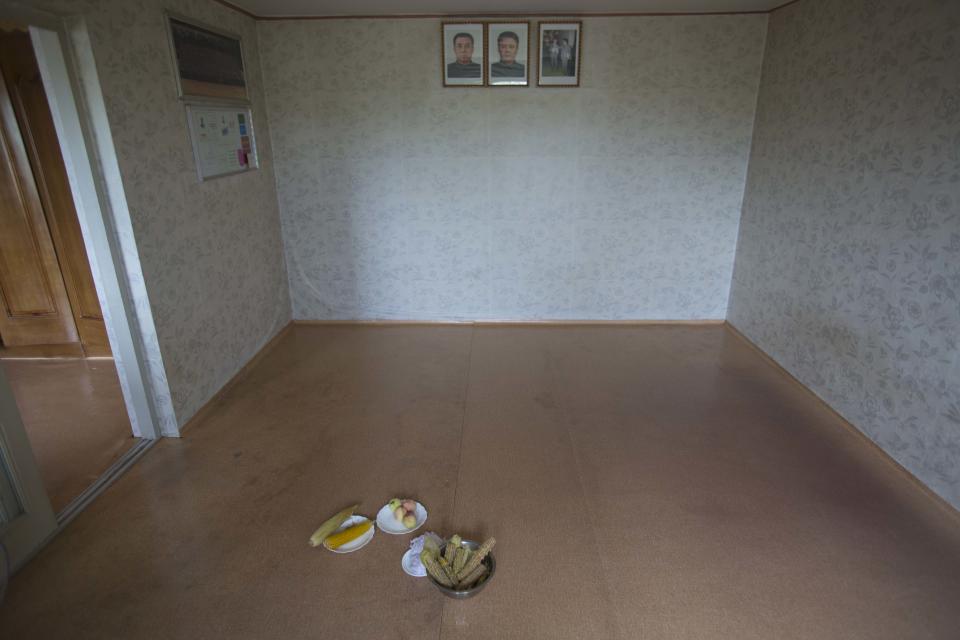Storms dampen hopes for bountiful NKorea harvest
WONSAN, North Korea (AP) — First came an extended dry spell in the spring, followed by a summer of flash floods and typhoons.
Now, with North Korean farmers preparing to head out into autumn fields to cut and thresh the nation's most important crop, rice, there are renewed concerns that continued harsh weather will mean another shortfall of food in this chronically hungry land.
There had been high hopes for better crop yields this year following the implementation of more modern farming techniques, said Kang Su Ik, a professor at North Korea's premier agricultural school. But those hopes have faded in what has proven to be another tough year for farmers in the disaster-prone North.
"I can't predict this year's harvest," said Kang, head of the Department of Crop Science at the Wonsan University of Agriculture in eastern North Korea. "But it's probable that this year's output will be lower than expected."
Agriculture remains the nation's lifeblood, contributing a quarter of the nation's economy and engaging a third of the population, according to the World Food Program.
But this craggy country of mountains and valleys has little arable land and for decades has not been able to grow enough food for its 24 million people. And in an era when most Northeast Asian nations leave most of the work to machines, northern farms still rely on backbreaking manual labor and have had to rely on foreign aid to make up for shortfalls in seeds and fertilizer.
The leanest period was a famine in the mid-1990s, a time known here as the "Arduous March," when foreign economists estimate that hundreds of thousands of North Koreans died of hunger.
With fall approaching, the harvest is on everyone's minds, from kindergarteners hunched over drawings of bright red tractors to art troupes and military bands rehearsing the rousing tunes they'll use to raise the spirits of farmers out in the fields.
This harvest is especially important to the government because it will be the first since Kim Jong Un assumed power following the December death of his father, Kim Jong Il. The young leader has declared the era of "belt-tightening" must end — an extraordinary acknowledgment of economic hardship from a regime that rarely admits weakness. By doing so, he challenged bureaucrats to find a way to turn things around.
With the summer corn crop picked and laid out to dry on roof tiles, the focus is now turning to the rice harvest, which begins later this month around the time of "chusok," or thanksgiving, a period that marks the beginning of frenzied farming activity, when even city dwellers are expected to help gather crops.
Rice is followed by soybeans later in the fall, then everyone hunkers down to turn cabbage into kimchi, the spicy fermented side dish that is considered nearly as much of a staple as white rice.
North Koreans refer to this busy time of year as "going into battle," a distinctive approach to the harvest in a country that operates under a "military first" policy and relies on the socialist collective spirit to make up for a lack of fuel and machinery.
But this year's extreme weather has dimmed hopes of a bountiful harvest.
Rural areas endured a protracted dry spell in May and June, just as crops needed water to germinate, said Kang, the Wonsan professor. Because of this, North Korean farmers brought in less than half the wheat, barley and potatoes anticipated in the spring, officials said.
Then, flash floods from summer storms killed scores of North Koreans, destroyed thousands of homes and drowned hundreds of thousands of acres of farmland, according to state media.
In recent weeks, a series of typhoons has lashed some parts of North Korea, leaving more people homeless.
The damage and death tolls could not be independently confirmed, but Associated Press journalists who traveled through the countryside in August saw roadways ripped apart and entire hamlets swept away by water that gushed down denuded mountainsides. Last month, just weeks before the corn harvest, acres of stalks languished in the muddy fields of South Phyongan Province, a key agricultural area.
United Nations officials said the extent of the damage to crops remains unclear and there are hopes it will be limited to areas hit hard by the flash floods. U.N. workers will fan out across the country starting next week for a far-reaching assessment that should provide a clearer picture on the current state of North Korea's food situation.
Longer-term, said Kang, the Wonsan professor, North Korea needs to continue modernizing its farming techniques and equipment.
"We need technology to step up to the world's standards," he told AP in an interview.
Most tractors are 10 to 15 years old, and there aren't enough trucks and fuel to carry crops to threshing yards and storage sheds before they spoil, U.N. officials said. North Korea has also struggled to secure high-quality seeds and the fertilizer needed to pump up yields.
This year, the U.N. has provided combine harvesters imported from Brazil and China, and state media said engineers at Kim Il Sung University have developed a more efficient harvester. North Korea is also sending farming experts to study in Russia, China and elsewhere, Kang said.
But while food is plentiful in the capital, Pyongyang, where many have the cash to supplement state-provided rice and cornmeal with meat, vegetables and fruit, 16 million other North Koreans struggle to eat a well-balanced diet, according to a U.N appeal to donors in June.
"Beyond the immediate needs due to flooding, the WFP is very concerned about the long-term intellectual and physical development of young children who are malnourished," said Claudia von Roehl, WFP's representative in Pyongyang, "mainly due to a monotonous diet lacking in key proteins, fats and micronutrients."
Even if the fall harvest isn't as bountiful as hoped, Kang said, he doesn't anticipate a return to the dark days of the Arduous March.
"We won't go back to those hard times again," he said.
______
Follow AP's Korea bureau chief for Seoul and Pyongyang at twitter.com/newsjean.

